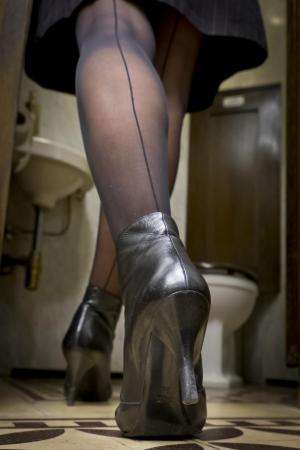Listeria screening in public lavatories in Vienna

Vienna's public lavatories were at the focus of a study by the Global Food Safety research group at the Vetmeduni Vienna. The researchers studied 224 public restrooms in Vienna, which are about 91 percent of all municipal public lavatories in the capital city, for the presence of the foodborne pathogen Listeria monocytogenes. The result: the bacteria were prevalent in two percent of all lavatories. Facilities in parks and near markets had a higher prevalence of L. monocytogenes than lavatories in shopping centres or at public transport locations. The study was published in the journal Zoonoses and Public Health.
Listeria monocytogenes is a so-called environmental bacterium. It is highly adaptable and resistant. Previous studies carried out at the University of Veterinary Medicine Vienna have shown that L. monocytogenes is more prevalent in rural areas than in cities. But the situation in urban lavatories had so far not been investigated.
Lavatories are hygiene hotspots
Dagmar Schoder, head of the Global Food Safety research group at the University of Veterinary Medicine Vienna, studied those places in Vienna visited by many people. "From a microbiological point of view, urban lavatory facilities are especially exciting places," Schoder says. "When people visit a public restroom, their shoes carry a great number of different bacteria through the facilities. To better understand the distribution and prevalence of Listeria in the urban environment, we studied the presence of Listeria on lavatory floors and on the shoe soles of facility patrons."
High prevalence in restrooms at park facilities and mobile container lavatories
The researchers found the bacterium Listeria monocytogenes in two percent of all lavatory samples. "The rate is especially high at park facilities and mobile container lavatories, both of which show a prevalence of over ten percent," says Schoder. The prevalence was lower in restrooms in shopping centres and at public transport locations.
Listeria were especially prevalent at food markets and Christmas markets. Schoder explains: "These markets often receive deliveries from or are run by rural farms. As Listeria tend to have better survival chances in the countryside, they are more prevalent there and are brought to the city on people's shoes."
When it comes to shoes, the following rule applies: the deeper the tread, the higher the Listeria prevalence. The bacteria are less common on flat soles.
Findings of interest for the food industry and for private households
"This study is especially interesting for food-producing facilities," says Schoder. "Today it is standard for businesses to ensure the highest level of hygiene within their operations. But more attention should be paid to the hygiene of persons making deliveries. Delivery persons and workmen often wear safety shoes with a deep tread. It is especially important that these persons regularly clean and disinfect their shoes." Schoder's recommendation for private households: "Do not enter living and eating areas with street shoes."
More information: "Urban Prevalence of Listeria spp. and Listeria monocytogenes in Public Lavatories and on Shoe Soles of Facility Patrons in the European Capital City Vienna", by Dagmar Schoder, Alois Schmalwieser, Kati Szakmary-Brändle, Beatrix. Stessl and Martin Wagner was published in the journal Zoonoses and Public Health. onlinelibrary.wiley.com/doi/10 … 1/zph.12121/abstract



















